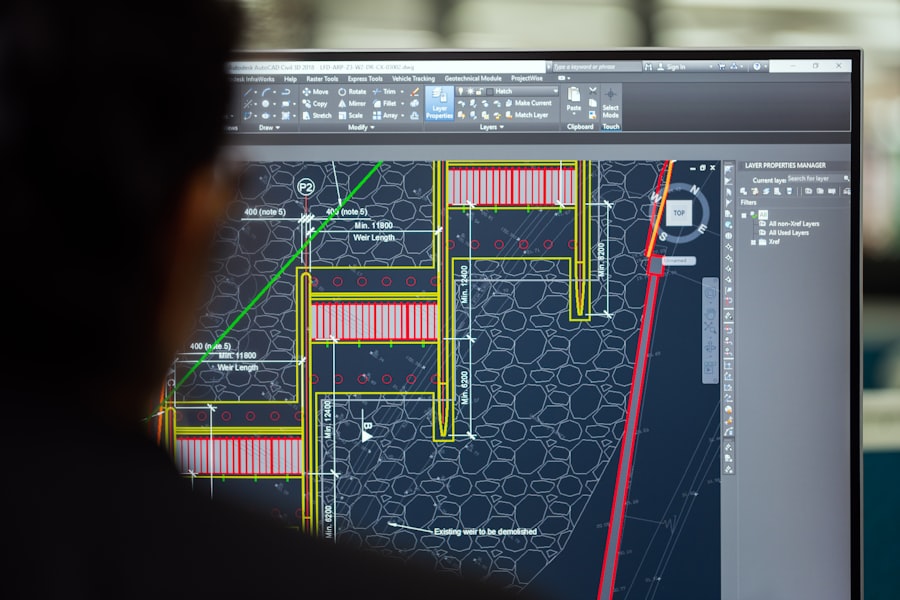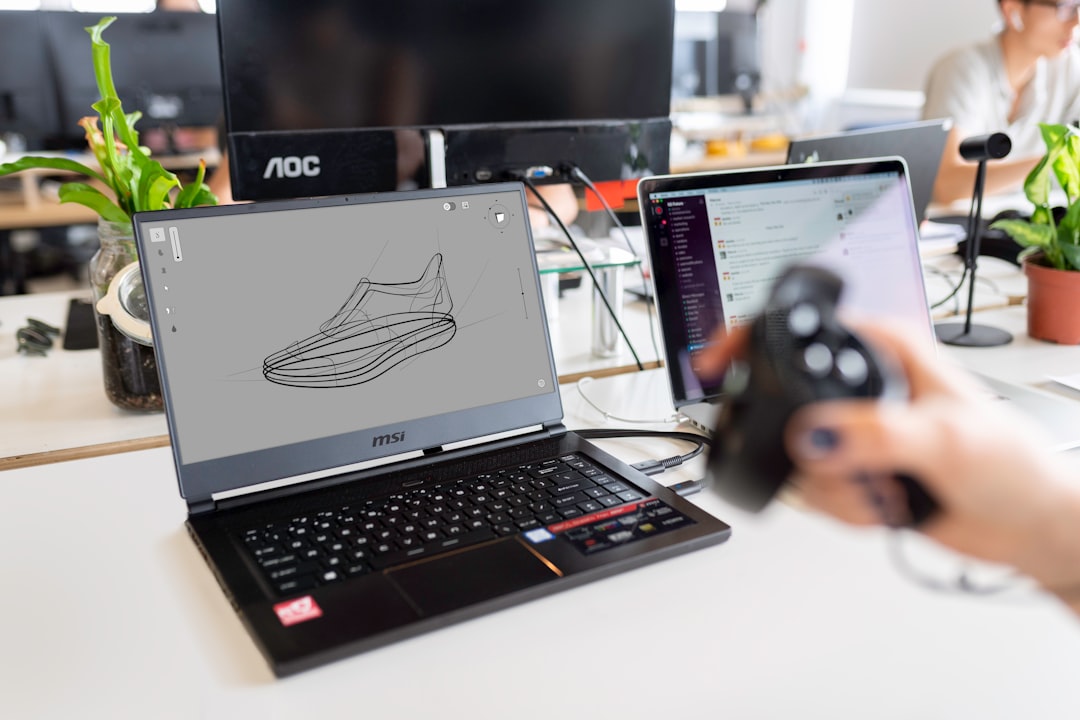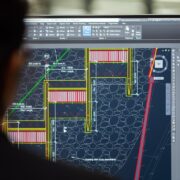
Revolutionize Your Video Editing with the Best Non-Linear Software of 2021
Non-linear video editing software is a type of software that allows users to edit and manipulate video footage in a non-linear manner. Unlike traditional linear editing, where footage is edited in a sequential order, non-linear editing allows for greater flexibility and creativity in the editing process. With non-linear video editing software, users can easily rearrange, trim, and modify their footage without affecting the original source files.
The history of non-linear video editing software dates back to the 1980s when computer-based editing systems started to emerge. These early systems were expensive and required specialized hardware and software. However, as technology advanced, non-linear video editing software became more accessible and affordable for both professionals and amateurs.
In today’s modern video production industry, non-linear video editing software plays a crucial role. It has revolutionized the way videos are edited and has become an essential tool for filmmakers, content creators, and video editors. Non-linear video editing software allows for faster and more efficient editing processes, offers a wide range of creative possibilities, and provides better organization and management of footage.
Key Takeaways
- Non-linear video editing software allows for greater flexibility and creativity in video editing.
- Key features of non-linear video editing software include timeline editing, multi-camera editing, and special effects.
- Benefits of using non-linear video editing software include faster editing times, easier collaboration, and the ability to make changes without losing quality.
- Top non-linear video editing software of 2021 include Adobe Premiere Pro, Final Cut Pro, and DaVinci Resolve.
- When comparing non-linear video editing software, consider factors such as price, ease of use, and available features.
Key Features of Non-Linear Video Editing Software
1. Timeline-based editing: One of the key features of non-linear video editing software is its timeline-based editing interface. This allows users to arrange their footage on a timeline, making it easy to visualize the sequence of shots and make precise edits. Users can easily trim, split, and rearrange clips on the timeline to create the desired flow of the video.
2. Non-destructive editing: Non-linear video editing software allows for non-destructive editing, meaning that the original source files are not modified or damaged during the editing process. Instead, changes are made to a virtual representation of the footage, known as a project file. This allows users to experiment with different edits without worrying about losing their original footage.
3. Multi-camera editing: Many non-linear video editing software programs offer multi-camera editing capabilities. This feature allows users to sync and edit footage from multiple cameras, making it easier to create dynamic and engaging videos. Users can switch between different camera angles and choose the best shots for each moment of the video.
4. Audio editing: Non-linear video editing software also includes powerful audio editing tools. Users can adjust the volume, add effects, and synchronize audio with video footage. This allows for precise control over the audio elements of the video, ensuring that the sound quality is professional and enhances the overall viewing experience.
5. Color correction: Another important feature of non-linear video editing software is color correction. This allows users to adjust the color and tone of their footage to achieve a desired look or mood. Color correction tools include options for adjusting brightness, contrast, saturation, and hue, as well as more advanced features like color grading and color matching.
6. Special effects and transitions: Non-linear video editing software offers a wide range of special effects and transitions to enhance the visual appeal of videos. Users can add text overlays, apply filters and effects, create animated titles, and use various types of transitions between clips. These features allow for creative storytelling and can make videos more engaging and professional-looking.
Benefits of Using Non-Linear Video Editing Software
1. Faster editing process: Non-linear video editing software significantly speeds up the editing process compared to traditional linear editing methods. With features like timeline-based editing, non-destructive editing, and keyboard shortcuts, users can quickly make edits, rearrange clips, and experiment with different effects without wasting time on repetitive tasks.
2. More creative freedom: Non-linear video editing software provides users with more creative freedom in their editing process. The ability to easily rearrange clips, apply effects, and experiment with different edits allows for greater flexibility and creativity in storytelling. Users can try out different ideas and make adjustments on the fly until they achieve the desired result.
3. Better organization and management of footage: Non-linear video editing software offers tools for better organization and management of footage. Users can create folders, add metadata, and use keywords to categorize and search for specific clips. This makes it easier to find and work with the desired footage, especially when dealing with large projects or extensive libraries of media files.
4. Ability to work with multiple formats and resolutions: Non-linear video editing software supports a wide range of video formats and resolutions, allowing users to work with footage from different sources without the need for conversion or transcoding. This saves time and ensures that the original quality of the footage is preserved throughout the editing process.
5. Collaboration and sharing capabilities: Many non-linear video editing software programs offer collaboration and sharing capabilities, allowing multiple users to work on the same project simultaneously. This is especially useful for teams working on video production projects, as it allows for real-time collaboration, feedback, and version control. Additionally, non-linear video editing software often provides options for exporting videos in various formats, making it easy to share the final product with clients or audiences.
Top Non-Linear Video Editing Software of 2021
| Software Name | Supported Platforms | Price | Key Features |
|---|---|---|---|
| Adobe Premiere Pro | Windows, Mac | Starting at 20.99/month | Advanced color grading, motion graphics, audio editing, VR editing |
| Final Cut Pro X | Mac | 299.99 | Intuitive interface, advanced color grading, motion graphics, audio editing |
| Davinci Resolve | Windows, Mac, Linux | Free, or 299 for full version | Professional color grading, audio editing, visual effects, collaboration tools |
| Avid Media Composer | Windows, Mac | Starting at 19.99/month | Advanced color grading, audio editing, collaboration tools, media management |
| HitFilm Pro | Windows, Mac | 349 | Advanced visual effects, motion graphics, audio editing, 3D compositing |
1. Adobe Premiere Pro: Adobe Premiere Pro is one of the most popular non-linear video editing software programs used by professionals in the industry. It offers a wide range of features, including advanced timeline-based editing, multi-camera editing, audio editing tools, color correction options, and special effects. Adobe Premiere Pro is known for its user-friendly interface and seamless integration with other Adobe Creative Cloud applications.
2. Final Cut Pro X: Final Cut Pro X is a non-linear video editing software developed by Apple for macOS users. It offers a powerful set of features, including a magnetic timeline, multi-camera editing, advanced color grading tools, and support for 360-degree video editing. Final Cut Pro X is known for its optimized performance and intuitive user interface, making it a popular choice among professional video editors.
3. DaVinci Resolve: DaVinci Resolve is a comprehensive non-linear video editing software that also includes advanced color grading and audio mixing capabilities. It offers a wide range of features, including timeline-based editing, multi-camera editing, special effects, and collaboration tools. DaVinci Resolve is known for its professional-grade color grading capabilities and is widely used in the film and television industry.
4. Avid Media Composer: Avid Media Composer is a non-linear video editing software that has been used in the industry for many years. It offers a robust set of features, including timeline-based editing, multi-camera editing, audio editing tools, and advanced color correction options. Avid Media Composer is known for its stability and reliability, making it a popular choice for professional video editors.
5. HitFilm Pro: HitFilm Pro is a non-linear video editing software that also includes powerful visual effects and compositing tools. It offers a wide range of features, including timeline-based editing, multi-camera editing, audio editing tools, color correction options, and a library of special effects. HitFilm Pro is known for its affordability and its ability to create high-quality visual effects without the need for additional software.
Comparison of Non-Linear Video Editing Software
When choosing non-linear video editing software, there are several factors to consider:
1. Price: The price of non-linear video editing software can vary significantly. Some programs offer free versions or trial periods, while others require a subscription or one-time purchase. It’s important to consider your budget and the features you need when comparing prices.
2. Features: Different non-linear video editing software programs offer different features and capabilities. Consider the specific needs of your project and look for software that offers the tools you require, such as multi-camera editing, advanced color grading, or special effects.
3. User interface: The user interface of non-linear video editing software can vary in terms of layout, design, and ease of use. It’s important to choose software that has an intuitive interface and is easy to navigate, especially if you are new to video editing.
4. Compatibility with different operating systems: Some non-linear video editing software programs are only available for specific operating systems, such as macOS or Windows. Make sure to choose software that is compatible with your operating system to avoid any compatibility issues.
5. Customer support: Consider the level of customer support offered by the non-linear video editing software company. Look for software that provides comprehensive documentation, tutorials, and responsive customer support to help you troubleshoot any issues that may arise.
How Non-Linear Video Editing Software Can Save You Time and Money

Non-linear video editing software can save you time and money in several ways:
1. Streamlined workflow: Non-linear video editing software offers a streamlined workflow that allows for faster and more efficient editing processes. Features like timeline-based editing, non-destructive editing, and keyboard shortcuts help speed up the editing process and reduce the time spent on repetitive tasks.
2. Ability to work remotely: Non-linear video editing software allows users to work remotely, which can save time and money on commuting or renting office space. With the ability to access projects from anywhere with an internet connection, users can collaborate with team members or work on projects at their convenience.
3. Reduced need for expensive hardware: Non-linear video editing software eliminates the need for expensive hardware traditionally used in linear editing systems. With a powerful computer and the right software, users can achieve professional-quality edits without investing in specialized equipment.
4. Increased efficiency in post-production: Non-linear video editing software offers features like batch processing, automated tasks, and templates that can significantly increase efficiency in post-production. These features allow users to apply edits or effects to multiple clips simultaneously, saving time and reducing the need for manual adjustments.
Tips for Getting Started with Non-Linear Video Editing Software
If you’re new to non-linear video editing software, here are some tips to help you get started:
1. Familiarize yourself with the software’s interface and features: Take the time to explore the software’s interface and familiarize yourself with its features. Watch tutorials or read documentation to learn how to navigate the software and make use of its tools effectively.
2. Organize your footage before importing it into the software: Before importing your footage into the non-linear video editing software, organize it in a logical and structured manner. Create folders, add metadata, and use keywords to categorize and search for specific clips easily.
3. Use keyboard shortcuts to speed up your editing process: Learn and use keyboard shortcuts to speed up your editing process. Most non-linear video editing software programs offer a wide range of keyboard shortcuts that can help you perform tasks quickly and efficiently.
4. Experiment with different effects and transitions: Don’t be afraid to experiment with different effects and transitions to enhance your videos. Non-linear video editing software offers a wide range of options, so take the time to explore and try out different effects until you achieve the desired result.
Advanced Techniques for Non-Linear Video Editing Software
Once you’re comfortable with the basics of non-linear video editing software, you can explore advanced techniques to take your edits to the next level:
1. Color grading: Learn how to use the color grading tools in your non-linear video editing software to enhance the look and feel of your footage. Experiment with different color grading techniques, such as adjusting brightness, contrast, saturation, and hue, to achieve a desired look or mood.
2. Audio mixing: Master the art of audio mixing by learning how to adjust volume levels, add effects, and synchronize audio with video footage. Pay attention to details like background noise reduction, equalization, and panning to create a professional-quality sound mix.
3. Motion graphics: Explore the motion graphics capabilities of your non-linear video editing software to add animated titles, lower thirds, and other visual elements to your videos. Learn how to use keyframe animation to create smooth and dynamic motion graphics.
4. Keyframe animation: Keyframe animation allows you to create smooth and dynamic animations by setting keyframes at different points in time. Learn how to use keyframe animation in your non-linear video editing software to add movement and visual interest to your videos.
5. 360-degree video editing: If you’re working with 360-degree video footage, learn how to use the specialized tools in your non-linear video editing software to edit and enhance the immersive experience. This may include features like 360-degree video stabilization, VR headset preview, and spatial audio editing.
Troubleshooting Common Issues with Non-Linear Video Editing Software
While non-linear video editing software is generally reliable, you may encounter some common issues. Here are some troubleshooting tips for common problems:
1. Slow performance: If your non-linear video editing software is running slowly, try closing other applications or processes that may be using up system resources. You can also try optimizing your computer’s performance by updating drivers, clearing cache files, or increasing available RAM.
2. Crashes and freezes: If your non-linear video editing software crashes or freezes frequently, make sure you have the latest version installed and that your computer meets the minimum system requirements. You can also try disabling any third-party plugins or effects that may be causing conflicts.
3. Audio syncing issues: If you’re experiencing audio syncing issues, make sure that your project settings match the settings of your footage. You can also try manually adjusting the audio sync by moving the audio track forward or backward in the timeline.
4. Exporting problems: If you’re having trouble exporting your video, check that you have enough available storage space and that you’re exporting to a compatible file format. You can also try exporting a smaller section of your project to isolate the issue.
5. Compatibility issues with hardware and software: If you’re experiencing compatibility issues with your non-linear video editing software, make sure that your hardware and software meet the minimum system requirements. You can also check for updates or patches from the software manufacturer to address any known compatibility issues.
Future Trends in Non-Linear Video Editing Software Development
The development of non-linear video editing software is constantly evolving, and there are several future trends to look out for:
1. Artificial intelligence and machine learning: Non-linear video editing software is likely to incorporate more artificial intelligence and machine learning capabilities in the future. This may include features like automated video editing, intelligent content analysis, and automatic tagging of footage.
2. Cloud-based editing: Cloud-based editing allows users to access their projects and media files from anywhere with an internet connection. This trend is likely to continue, with non-linear video editing software offering more cloud-based collaboration and storage options.
3. Virtual and augmented reality integration: As virtual and augmented reality technologies become more prevalent, non-linear video editing software is likely to integrate these capabilities. This may include features like 360-degree video editing, VR headset preview, and spatial audio editing.
4. Improved collaboration and sharing capabilities: Non-linear video editing software will continue to improve collaboration and sharing capabilities, making it easier for teams to work together on projects. This may include real-time collaboration, allowing multiple users to edit a video simultaneously, and the ability to easily share projects with others. These advancements will streamline the editing process and enhance productivity, as team members can work together in real-time, provide feedback, and make changes on the spot. Additionally, improved sharing capabilities will make it effortless to distribute finished videos to clients, stakeholders, or social media platforms, ensuring that the final product reaches its intended audience quickly and efficiently.
FAQs
What is non-linear video editing software?
Non-linear video editing software is a type of software used to edit video footage that allows for non-destructive editing. This means that the original footage remains intact while the edited version is created separately.
What are the benefits of using non-linear video editing software?
The benefits of using non-linear video editing software include the ability to make changes to the footage without affecting the original, the ability to work with multiple video and audio tracks, and the ability to add special effects and transitions.
What are some examples of non-linear video editing software?
Some examples of non-linear video editing software include Adobe Premiere Pro, Final Cut Pro, Avid Media Composer, DaVinci Resolve, and HitFilm Express.
What features should I look for in non-linear video editing software?
When looking for non-linear video editing software, you should look for features such as the ability to work with multiple video and audio tracks, support for a wide range of file formats, the ability to add special effects and transitions, and the ability to export your finished project in a variety of formats.
What is the best non-linear video editing software?
The best non-linear video editing software will depend on your specific needs and preferences. Some popular options include Adobe Premiere Pro, Final Cut Pro, and DaVinci Resolve. It is recommended to try out a few different options before deciding on the best one for you.















